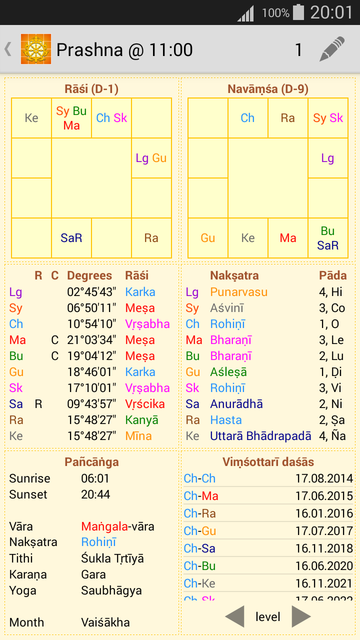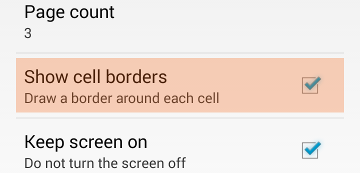Version 2.1.0 brings good news to those of us who use the free version: it is now possible to calculate horoscopes for
past dates! Both free and full versions have gained several new cell types (three for relationships between grahas and
one for sarvatobhadra cakra), as well as some useful polishing and enhancements.
Previously, the free version of Chakra Darshana was restricted to dates in the current month, allowing to work with
praśna, follow the current gocara, and do some short-term planning. However, as Chakra Darshana keeps developing,
more cell types are added and so it was possible to relax this restriction and redesign the free version concept a bit.
Now, the full date range is available for the free version and the concept of premium cells was introduced. For current
dates (two weeks before and two weeks after), all cell types are available, similar to how it was before, allowing to
test the correctness of all calculations. For past and future dates, cells containing essential information for analysis
are provided, allowing to calculate real horoscopes, but cells containing additional or advanced information are marked
as premium (note the stars in the screenshot below) and will be available in the full version:

Three new cell types that show relationships between grahas have been added: “Naisargikā maitrī” (natural
relationships), “Tātkālikā maitrī” (temporary relationships), and “Pañcadhā maitrī” (compound relationships):

Please note that classic texts (e.g., Bṛhat Pārāśara Horā Śāstra 3.55) only describe relationships between the seven
visible grahas, excluding Rāhu and Ketu. Relationship data for Rāhu and Ketu in these cells is provided for
completeness and is taken from the commentaries to Bṛhat Pārāśara Horā Śāstra 3.55 by R. Santhanam (1984) and Girish
Chand Sharma (1999), representing one of the commonly accepted opinions on the matter.
The next major feature of this release is sarvatobhadra cakra. Even if you do not intend to use this cakra for its
main purpose, it is still useful to get a graphical depiction of how grahas are positioned in nakṣatras. Note that
in this cakra 28 nakṣatras are used, including Abhijit, which is assumed to be in the last pāda of Uttarā
Aṣāḍhā and the first 1/15th part of Śravaṇa, spanning from 6°40’ to 10°53’20” in Makara:

Finally, as seen in the screenshot above, we have also added bhāva indexes for South Indian charts in response to the
South Indian style poll on Facebook. Thanks to
everyone who responded and gave feedback on this question!








